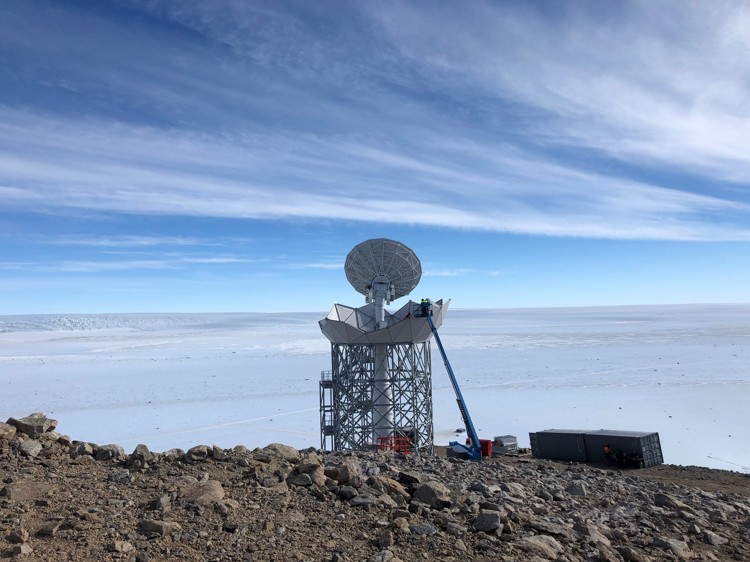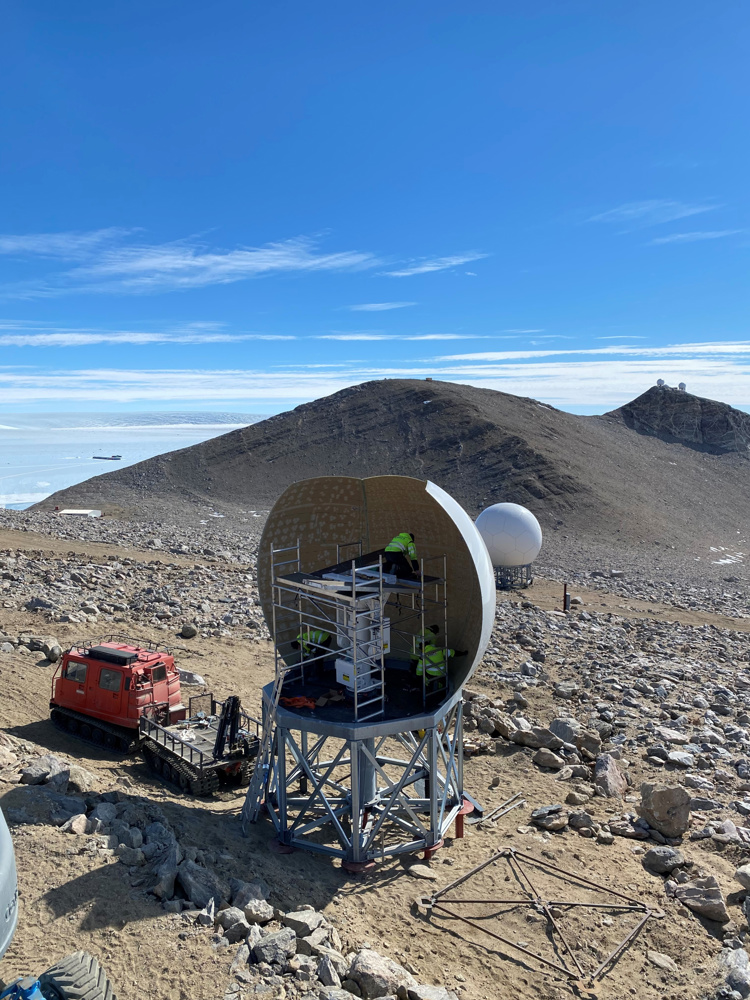We know what it takes to deliver reliable operational end-to-end services at a top level – every day. That means going to some of the most remote places on earth to operate. At Antarctica KSAT operates close to 15 antennas, but the difference from other stations is that it’s only possible to access in summer: The Antarctic summer stretches from mid-November to the beginning of March. In that period of time “everything” needs to be done, because later it’s next to impossible to fly in.
– All maintenance, upgrading, infrastructure work, changes and improvements need to be handled in these months, Thomas Rochmann, antenna engineer at KSAT says.

4 months to build
Rochmann is in the team that will spend summer on the other side of the globe. He plans to stay a month and a half at the site. There will be long days, as the schedule is very tight – increasing the number of antennas at Troll with 60 per cent in just 4 months.
The Norwegian Polar Institute stays put in Antarctica all year, so when the KSAT team arrives, it’s a welcoming change of shifts. A crew of technical staff takes care of the station on behalf of KSAT, so the engineering team has to make sure they have everything they need in the handover.

Six new antennas
This year 34 new antennas are built for the smallsat market, six of them on Troll. Building them with foundations and roads, takes logistics to a new level when you are in one of the most, if not the most, remote corners of the world. Now KSAT also has installed a ka-band antenna as part of the network.
Most of the cargo is transported by boat. The polar institute once a year opens a route for transport from the ice edge to the station, taking three weeks to build. Then there’s a distance on more than 20k to the actual site. It may take over a week to transport everything from the boat to the final destination: The KSAT ground station.
From the KSAT side most of the team departs for Troll in January – when the Antarctic summer is on its peak – approximately at the same time as the cargo boat arrives. There are only four aircrafts in four months flying to Antarctica; in November, December, January and March.
– The success of the logistic operation is crucial for the engineers to do their job, Rochmann points out.
However, some of the crew stay for the full three months of summer. The crew consists of highly experienced personell: antenna engineers, baseband engineers, system engineers and IT. 16 years of experience helps, the first antenna being installed at the station in 2006.
– Our crew must be away from their family and friends for a long time. A lot of social activities are important, like hiking and making sure there’s good food as well, the system engineer says.

The KSAT network currently consists of more than 260 antennas in 25 select locations. The Troll/Antarctica Ground Station located at 72' South, the only commercial ground station in Antarctica, provides access to almost all orbits from the southern hemisphere. The Svalbard Ground Station combined with the Troll/Antarctica Ground Station provides connectivity twice per orbit for most Polar Orbiting satellites.



